Full text
PDF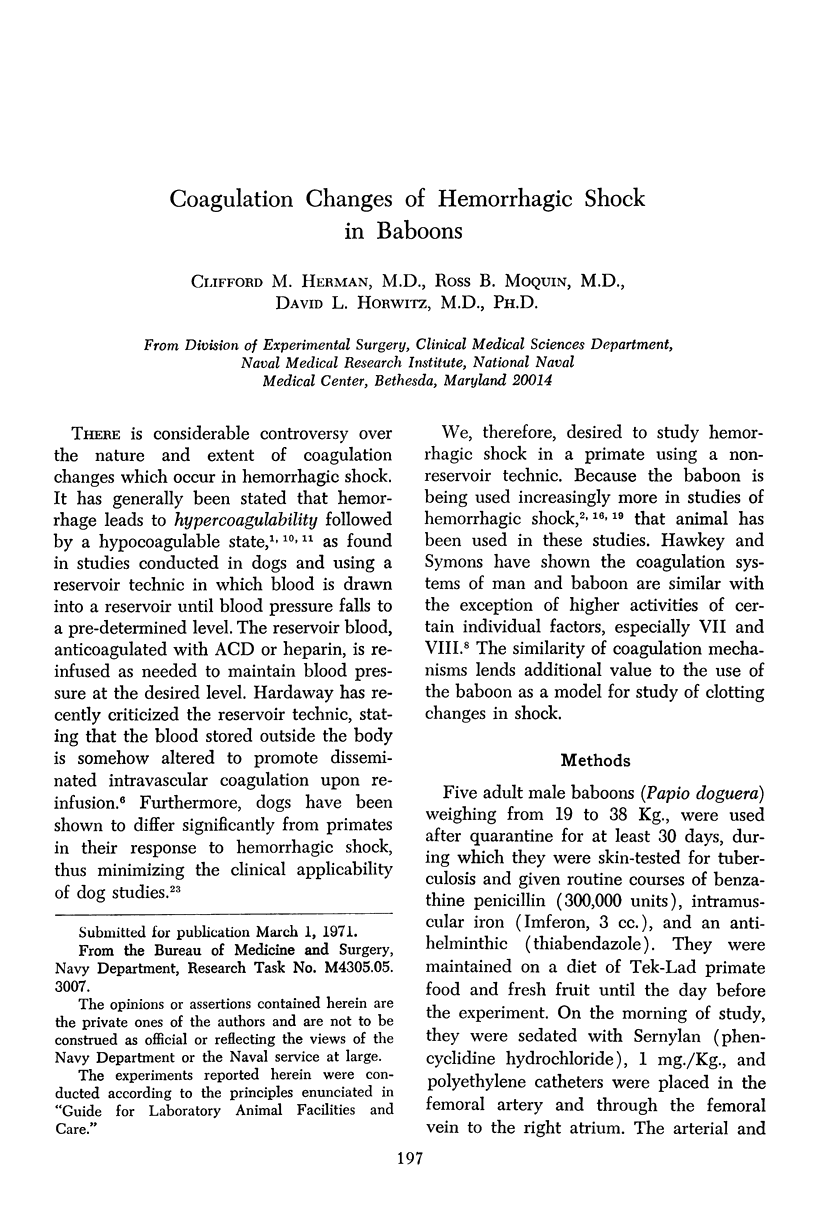
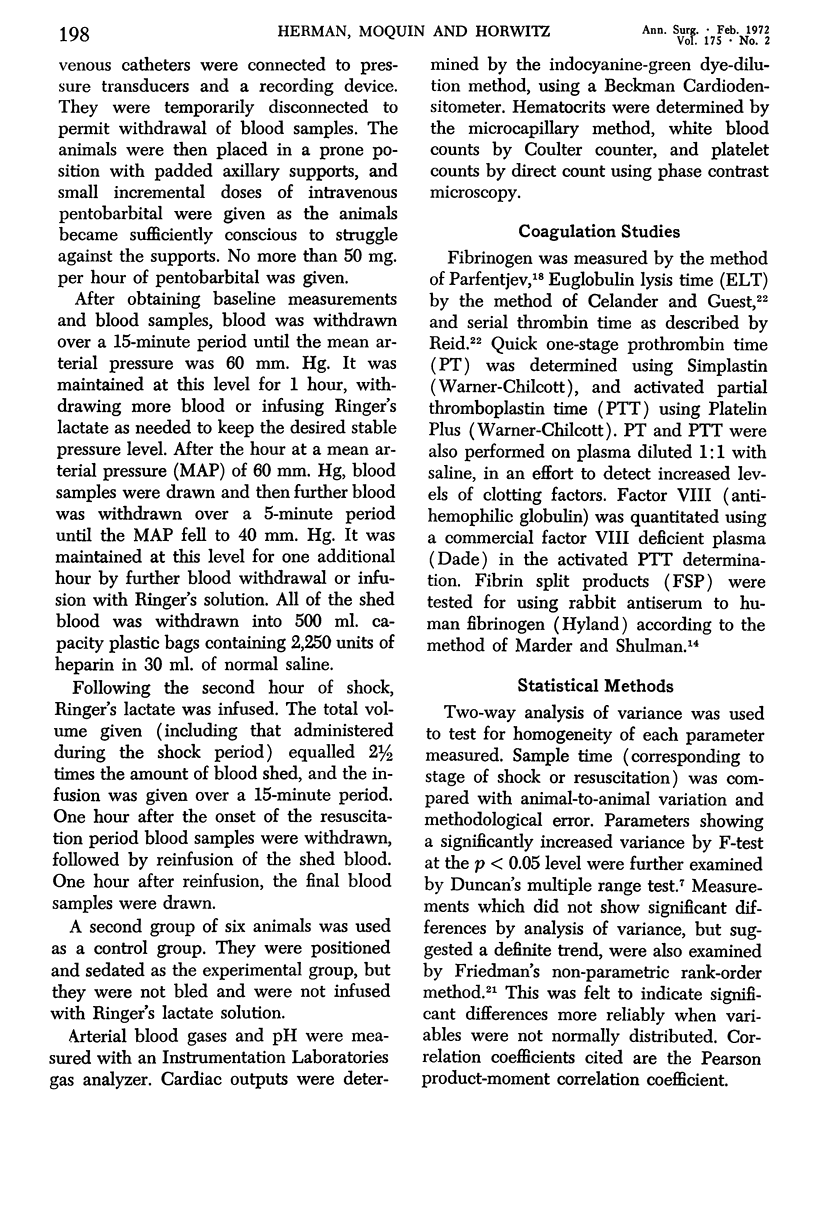
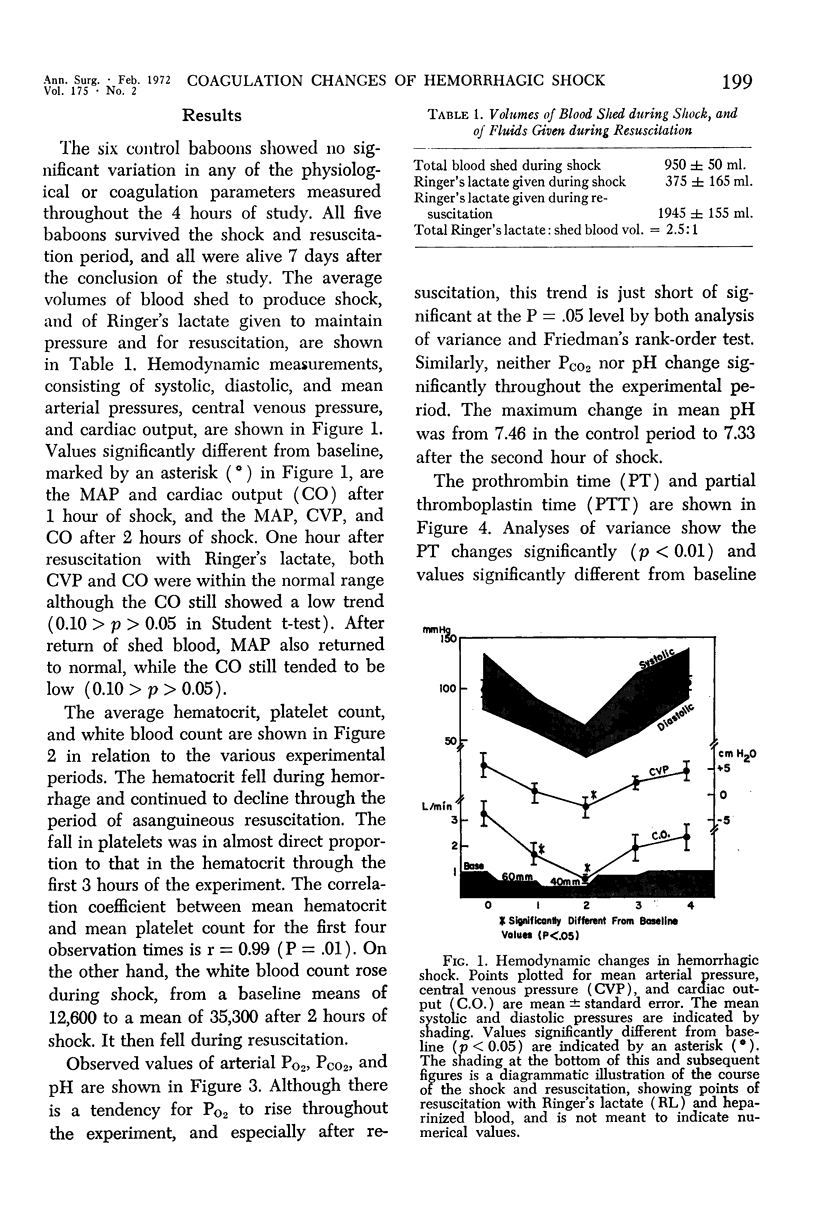
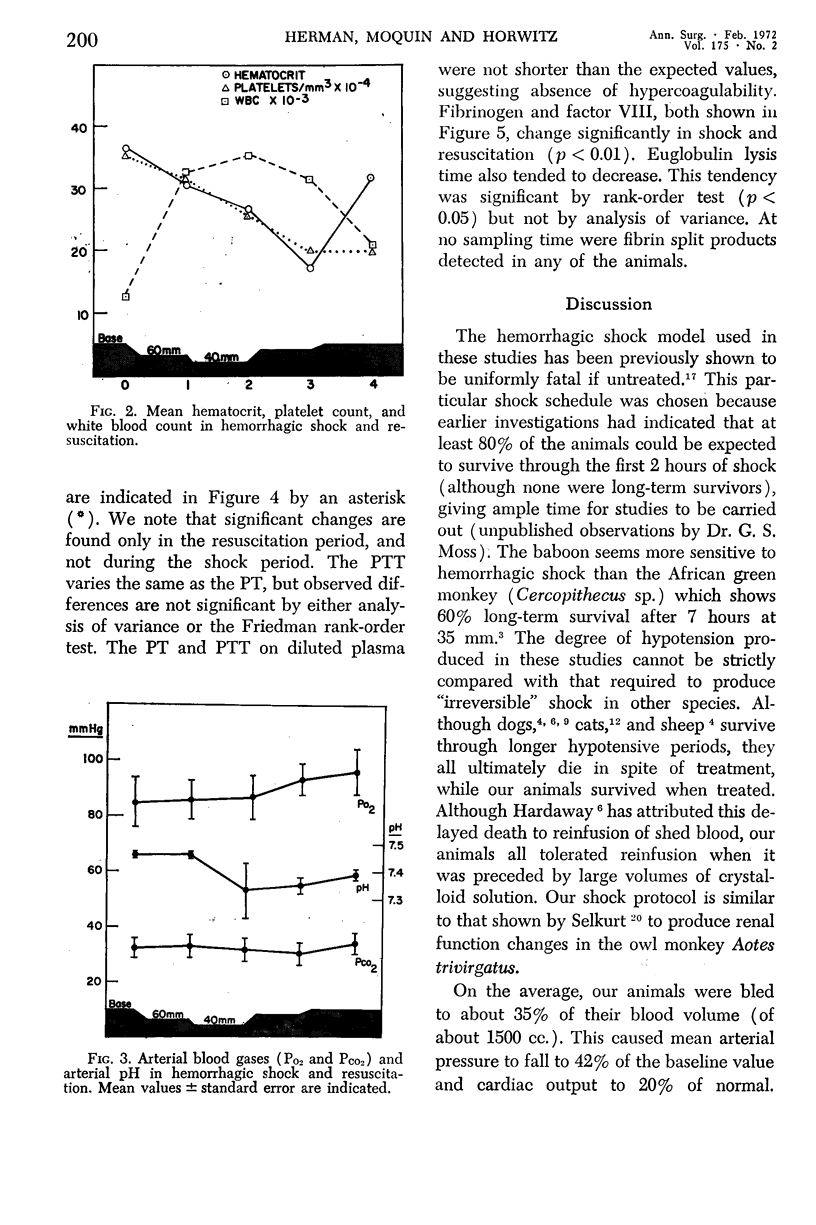
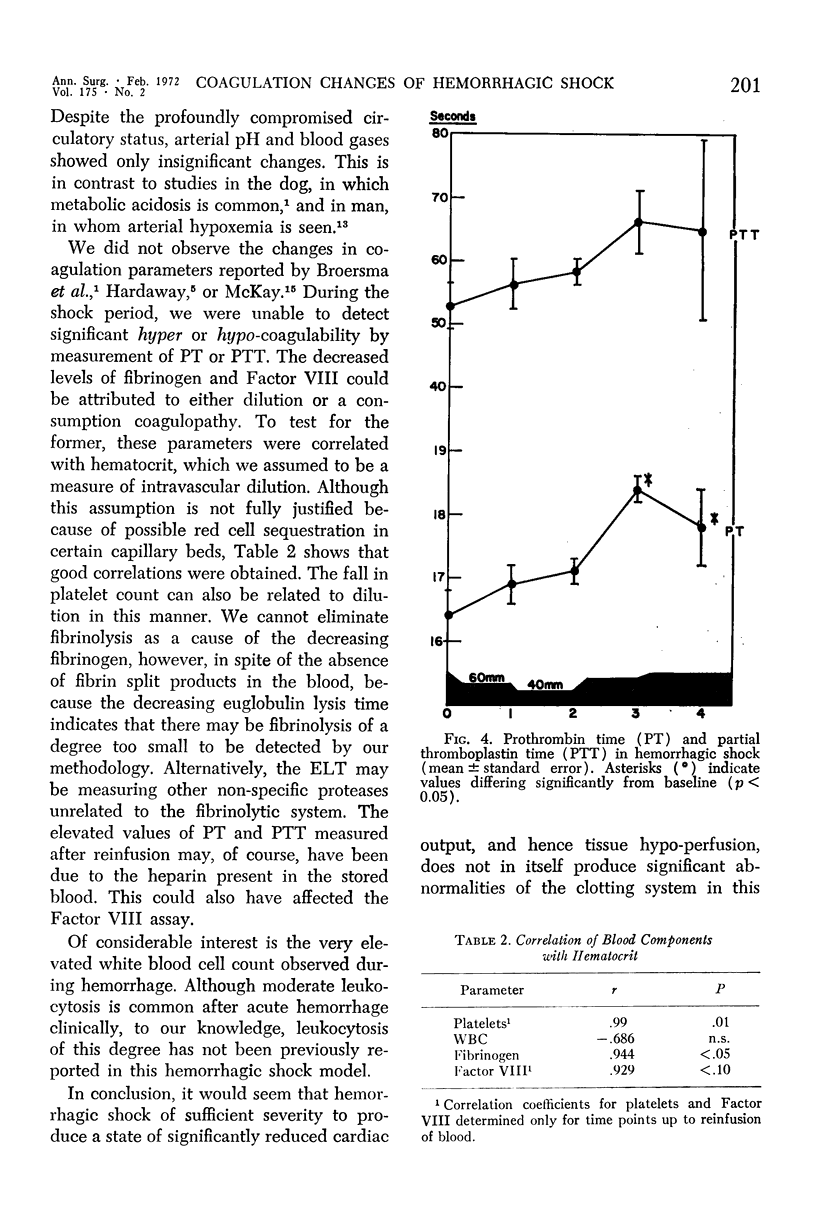
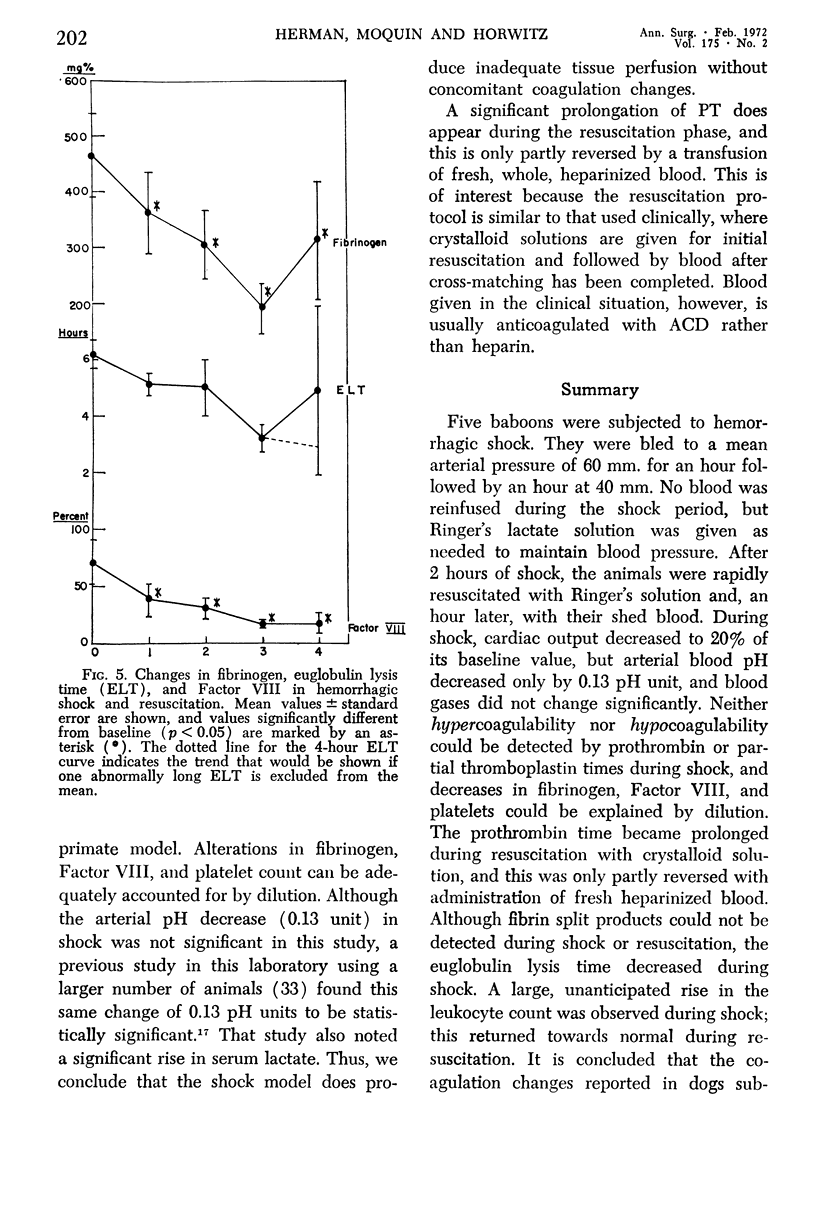
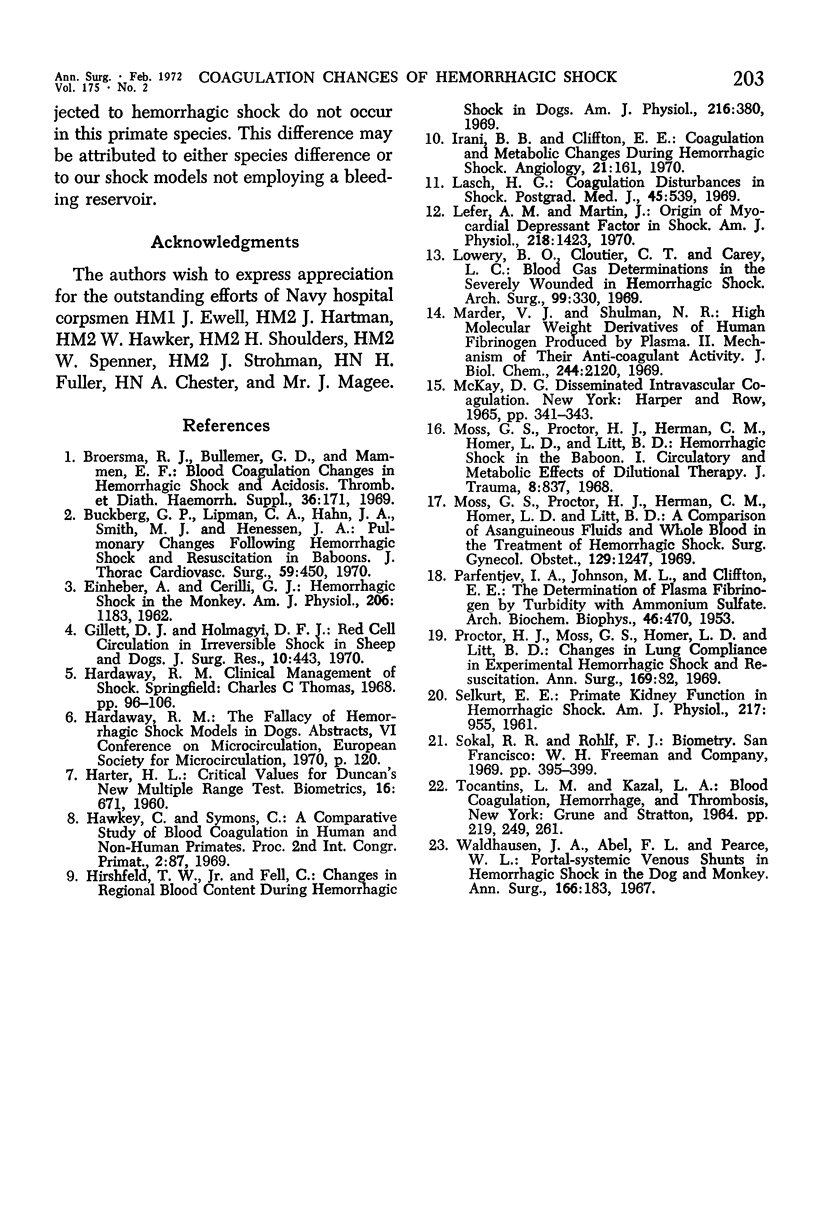
Selected References
These references are in PubMed. This may not be the complete list of references from this article.
- Bit-Alkhas Irani B., Cliffton E. E. Coagulation and metabolic changes during hemorrhagic shock. Angiology. 1970 Mar;21(3):161–171. doi: 10.1177/000331977002100303. [DOI] [PubMed] [Google Scholar]
- Broersma R. J., Bullemer G. D., Mammen E. F. Blood coagulation changes in hemorrhagic shock and acidosis. Thromb Diath Haemorrh Suppl. 1969;36:171–176. [PubMed] [Google Scholar]
- Buckberg G. D., Lipman C. A., Hahn J. A., Smith M. J., Hennessen J. A. Pulmonary changes following hemorrhagic shock and resuscitation in baboons. J Thorac Cardiovasc Surg. 1970 Mar;59(3):450–460. [PubMed] [Google Scholar]
- EINHEBER A., CERILLI G. J. Hemorrhagic shock in the monkey. Am J Physiol. 1962 Jun;202:1183–1187. doi: 10.1152/ajplegacy.1962.202.6.1183. [DOI] [PubMed] [Google Scholar]
- Gillett D. J., Halmagyi D. F. Red cell circulation in irreversible shock in sheep and dogs. J Surg Res. 1970 Sep;10(9):443–446. doi: 10.1016/0022-4804(70)90068-5. [DOI] [PubMed] [Google Scholar]
- Hirshfeld J. W., Jr, Fell C. Changes in regional blood content during hemorrhagic shock in dogs. Am J Physiol. 1969 Feb;216(2):380–385. doi: 10.1152/ajplegacy.1969.216.2.380. [DOI] [PubMed] [Google Scholar]
- Lasch H. G. Coagulation disturbances in shock. Postgrad Med J. 1969 Aug;45(526):539–542. doi: 10.1136/pgmj.45.526.539. [DOI] [PMC free article] [PubMed] [Google Scholar]
- Lefer A. M., Martin J. Origin of myocardial depressant factor in shock. Am J Physiol. 1970 May;218(5):1423–1427. doi: 10.1152/ajplegacy.1970.218.5.1423. [DOI] [PubMed] [Google Scholar]
- Lowery B. D., Cloutier C. T., Carey L. C. Blood gas determinations in the severely wounded in hemorrhagic shock. Arch Surg. 1969 Sep;99(3):330–338. doi: 10.1001/archsurg.1969.01340150038006. [DOI] [PubMed] [Google Scholar]
- Marder V. J., Shulman N. R. High molecular weight derivatives of human fibrinogen produced by plasmin. II. Mechanism of their anticoagulant activity. J Biol Chem. 1969 Apr 25;244(8):2120–2124. [PubMed] [Google Scholar]
- Moss G. S., Proctor H. J., Herman C. M., Homer L. D., Litt B. D. Hemorrhagic shock in the baboon. I. Circulatory and metabolic effects of dilutional therapy. Preliminary report. J Trauma. 1968 Sep;8(5):837–841. [PubMed] [Google Scholar]
- PARFENTJEV I. A., JOHNSON M. L., CLIFFTON E. E. The determination of plasma fibrinogen by turbidity with ammonium sulfate. Arch Biochem Biophys. 1953 Oct;46(2):470–480. doi: 10.1016/0003-9861(53)90218-5. [DOI] [PubMed] [Google Scholar]
- Proctor H. J., Moss G. S., Homer L. D., Litt B. D. Changes in lung compliance in experimental hemorrhagic shock and resuscitation. Ann Surg. 1969 Jan;169(1):82–92. doi: 10.1097/00000658-196901000-00008. [DOI] [PMC free article] [PubMed] [Google Scholar]
- Selkurt E. E. Primate kidney function in hemorrhagic shock. Am J Physiol. 1969 Oct;217(4):955–961. doi: 10.1152/ajplegacy.1969.217.4.955. [DOI] [PubMed] [Google Scholar]
- Waldhausen J. A., Abel F. L., Pearce W. L. Portal-systemic venous shunts in hemorrhagic shock in the dog and monkey. Ann Surg. 1967 Aug;166(2):183–189. doi: 10.1097/00000658-196708000-00003. [DOI] [PMC free article] [PubMed] [Google Scholar]


